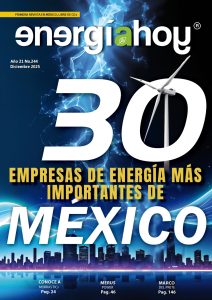Scott Hempling Attorney at Law LLC Effective Regulation of Public UtilitiesDecember 2019
Each November, families give thanks for what enriches their personal lives. For those of us in utility regulation, there also are many thanks to give. Here are ten examples:
Ownership diversity: We have utilities owned by investors, by consumers, and by federal, state, county, city, and town governments. In their scatterplot of failures and successes, no data point is static. This gives the lie to worn-out rhetoric about “public vs. private,” and induces humility in those who are certain of solutions (like some of Montgomery County, Maryland’s outage sufferers, who wanted public ownership of the investor-owned Potomac Electric Power Company; and Newsday, the paper of record for Hurricane Sandy-tortured Long Island, which sought investor ownership of the government-owned Long Island Power Authority). Let the comparisons continue.
Professional consumer advocacy: Egregiously absent from most nations’ regulatory systems, our brand of tax-funded and rate-funded consumer advocacy ensures alternative views presented by professional practitioners. Exemplified by such icons as former Pennsylvania Consumer Advocate Sonny Popowsky, former New Hampshire Commissioner Nancy Brockway, the low-income advocate Roger Colton, and the binomened West Virginian Billy Jack Gregg, our system persists; even while under-funded, tolerated but only minimally supported by tax-frightened politicians.
It is a system in which captive ratepayers pay for shareholder advocacy while legislative budget-cutters lower the level of consumer advocacy. The result is hearing rooms where $500/hour private lawyers battle $50/hour government lawyers, and utility witnesses outnumber consumer witnesses 4 to 1. To bridge that distance even halfway would better balance utility-heavy hearing records with expertise aimed at values broader than “return on equity” and “competitive positioning”; values like consumer education, consumer choice, and calibrating utility compensation to utility performance.
Engineers, craft workers and line workers: Most of us sit at computers and stand at lecterns, filing pleadings, writing briefs, giving testimony, cross-examining witnesses, drafting statutes and promulgating rules, all arguing endlessly about market structure, rate structure, corporate relationships, interest rates and hurdle rates. Others, thankfully, are designing and building our infrastructure, and fixing it when storms bring it down. Utility workers and their unions deserve our thanks, but they also need our support—the funding that will prepare our community colleges and universities to replenish workers’ ranks as the current cohort retires.
Unbundling: Unbundling means “making available for sale separately.” This three-decade effort has tested, and at times disproved, the century-old assumption that the only efficient utility is a vertically integrated monopoly. Unbundling has given us new entrants in electric generation (large and small, conventional and renewable, remote and local, bulk and distributed); retail energy sales and metering; long distance, local, wireline and cellular telephony; demand management purchased and sold locally and regionally. Unbundling may even give us competition in transmission service, if FERC bolsters its landmark Order 1000 with financial consequences for foot-draggers—those transmission owners hoping to leverage their “rights of first refusal” to protect their incumbencies. Unbundling will continue to succeed if seen as experimental rather than ideological, if assessed based on facts rather than imposed based on faith.
Federal government and its taxpayers: Our national infrastructure needs a national supporter. Federal agencies support the research into pollution control, broadband speed, water treatment and transmission technology—research that utilities and their states underfund individually, for fear of increasing their rates relative to their neighbors’. Federal agencies also pour money into storm-damaged service territories that local regulators and ratepayers have protected insufficiently, and identify our vulnerabilities to sabotage, terrorists and weather. But these federal faucets cannot flow forever; state commissions and their utilities will need to spend more from their own spigots to reduce the many risks of environmental damage, price volatility, service shortages and disruptions.
State governments: They deserve our thanks for creating and sustaining a regulatory infrastructure; an infrastructure that, while under-staffed, under-paid, under- resourced, under-respected, and under-supported by the political sectors, has the near-impossible job of tempering the market power of incumbents, of extracting competitive performance from companies whose government-protected status was neither gained nor retained through competitive merit. As with consumer advocacy, if we could couple this recognition with revenue, the return would be worth it.
The Canadian regulators: Their annual conference planning team taps major actors for funds: not to advertise their market presence but to subsidize the conference presence of advocates for the under-represented. Delightfully, those advocates do not repay this beneficence with reticence.
The Nigerian Electricity Regulatory Commission: Its staff in 2010 held an educational conference for judges who hear appeals, teaching them the engineering, economics and law of regulation. When the conference closed, I heard judges saying, “With all this complexity, perhaps we should defer more.”
The Federal Energy Regulatory Commission: It has sprung itself and state regulators loose from the long-time, zero-sum disputes over electricity jurisdiction, in two ways: First, FERC has ordered transmission providers to consider “public policy requirements” when planning regionally, in Order 1000. With their utilities thus directed, states can lead regional decisionmaking: by establishing their own state plans, and then directing their transmission-owning utilities to mesh those plans into least-cost, best-fit regional plans. Second, FERC has ordered regional transmission organizations to accommodate demand response bids from sources in states that permit them (and compensate those bids the same as generation bids). This innovation allows each state full control over its demand-side market structure—from traditional monopoly to may-the-best-deal-win competition. FERC’s solution gives states clout they have not had—the clout to discipline their utilities’ generation and purchase decisions by comparing them to regional demand response prices.
Hawai’i, Oregon, Maine, and Vermont: They escaped the competition vs. monopoly dichotomy by using both market structures. Observing a natural monopoly in energy efficiency services, they used competition to select the provider, through a process that valued skill and guts rather than political connections or incumbency. They then based the continuing right to serve not on inertia and indifference, but on performance, according to state-of-the-art criteria. This is a formula for economic efficiency and customer service we could stand to use for utilities who received tenure a century ago, for reasons no one remembers.
* * *
No doubt readers can add to this list. The more our successes are highlighted, the more they can be replicated. But by whom? We often think of our infrastructure industries in terms of physical infrastructure: poles, wires, rights-of-way, reservoirs, towers, pipes and power plants. The foundation of that physical infrastructure, however, is people: legislators who determine powers, rights and responsibilities; regulators who establish and enforce standards; line workers, operators, and executives who make things work; consumers and taxpayers who pay for it all; and most importantly the citizenry, whose votes and vigilance preserve the democratic process that keeps us accountable.



